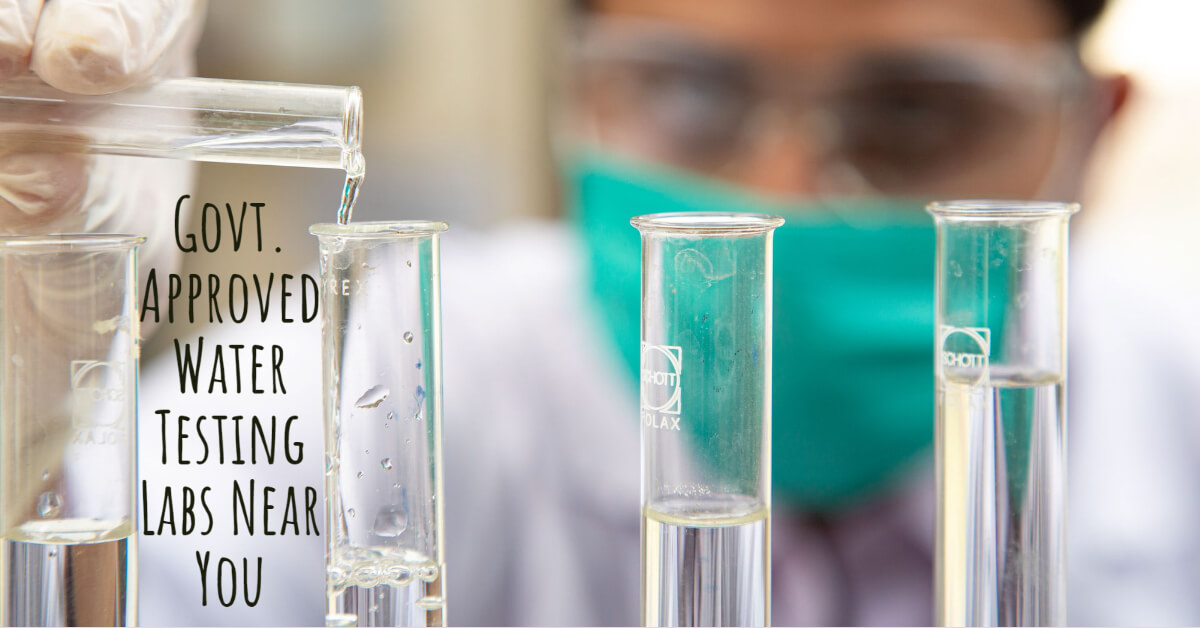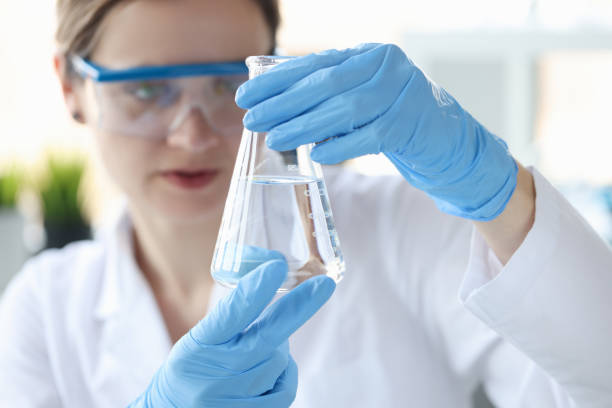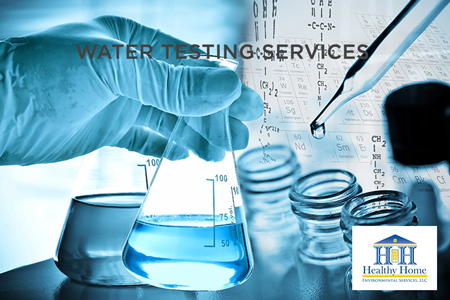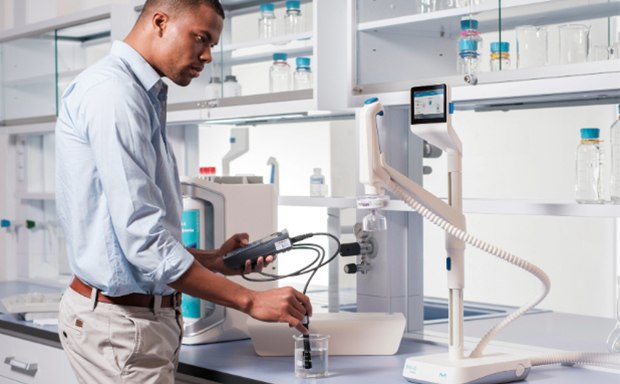Why You Must Choose Our Water Testing Service for Your Home
Discover What Is Included in Water Checking and Just How It Ensures Safe Drinking Water
Recognizing the ins and outs of water testing is pivotal in ensuring the top quality and security of our drinking water. Via a careful evaluation of physical, chemical, and microbiological facets, water screening determines potential impurities that can position health risks.
Trick Parts of Water Testing
Water screening is a critical procedure that includes a number of vital elements to make certain the security and top quality of drinking water. Among the primary elements is the analysis of physical qualities, consisting of shade, turbidity, and odor. These characteristics can give preliminary understandings right into the water's condition and potential contamination resources. Furthermore, guaranteeing the pH balance of water is essential, as it influences the water's corrosiveness and the effectiveness of sanitation procedures.
Another considerable part entails microbiological analysis, where water samples are taken a look at for the presence of microorganisms such as germs, viruses, and protozoa. If taken in, this analysis is crucial to determine organic dangers that might present health and wellness threats. Furthermore, chemical evaluations are conducted to spot not natural and natural materials, such as heavy steels, nitrates, and chemicals, that might be present in the water system.

Discovering Dangerous Pollutants
Discovering damaging contaminants in alcohol consumption water is an essential facet of guarding public wellness. Each kind of impurity presents unique health and wellness dangers, making their discovery vital to make certain the water eaten by the public is safe.
Water screening for impurities is generally performed by regulative companies and water utilities, utilizing a mix of area tasting and lab evaluation. These analyses are made to detect both naturally happening materials and anthropogenic toxins that might have entered the water via agricultural runoff, industrial discharge, or maturing infrastructure. Regular tracking is necessary, as contamination degrees can fluctuate due to environmental modifications, seasonal variants, or human tasks.
The identification of hazardous contaminants informs necessary actions, such as water therapy interventions or public advisories, to alleviate risks. Early discovery is important to avoid negative health effects, varying from stomach ailments to long-lasting conditions like cancer cells, consequently guaranteeing the continued safety and security of alcohol consumption water.

Chemical Analysis Strategies
In the world of guaranteeing secure drinking water, chemical analysis strategies play a critical role in recognizing and measuring impurities. These approaches are necessary for finding a large range of chemical materials, including hefty metals, pesticides, and commercial contaminants, which can posture considerable wellness risks. Methods such as atomic absorption spectroscopy (AAS) and inductively coupled plasma mass spectrometry (ICP-MS) are frequently used to determine trace degrees of steels like arsenic, lead, and mercury. These tools provide exact quantification, assisting in conformity with regulative criteria.
Gas chromatography-mass spectrometry (GC-MS) is an additional critical technique, particularly for organic compounds. It separates complicated blends and determines semi-volatile and unpredictable natural substances, ensuring that pollutants like benzene and toluene are within safe limits. High-performance liquid chromatography (HPLC) is similarly utilized for non-volatile substances, including certain pesticides and pharmaceuticals.
Ion chromatography is employed to determine concentrations about his of cations and anions, such as nitrates and sulfates, which are pivotal in assessing water quality. These chemical analysis techniques collectively ensure that drinking water continues to be secure by identifying deviations from established pureness standards, thus securing public health and wellness. Ensuring precision and precision in these tests is paramount to maintaining the honesty of water safety and security evaluations.
Microbiological Evaluating Methods
Exact microbiological testing is essential for safeguarding public wellness by making sure that drinking water is devoid of unsafe microorganisms. This process entails discovering and specifying microbes such as microorganisms, viruses, and protozoa that might pollute water supplies. Usual virus include Escherichia coli, Giardia, and Cryptosporidium, each posturing considerable health risks.
Numerous techniques are employed in microbiological screening to determine these threats. The membrane layer filtering technique is often utilized, involving water going through a filter that catches bacteria, which are after that cultured to identify their visibility and concentration. The multiple-tube fermentation method makes it possible for the quantification of coliform bacteria making use of a series of dilution and incubation actions.
Developments in modern technology have actually introduced molecular methods such as polymerase chain reaction (PCR), which permits for the very particular and fast detection of microorganisms by intensifying their genetic material. Enzyme-linked immunosorbent assays (ELISA) likewise use a technique to detect pathogens by determining certain healthy proteins or antigens.
These differed approaches are essential for extensive water high quality analysis, ensuring that water treatment processes work which internet circulation systems preserve safety and security. By using these microbiological screening approaches, potential health risks can be determined and minimized quickly.

Importance for Public Health And Wellness
Making sure the microbiological security of alcohol consumption water straight affects public health and wellness by stopping the spread of waterborne conditions. Virus such as bacteria, infections, and protozoa can bring about ailments like cholera, dysentery, and gastrointestinal infections (Water Tesing Services Tampa). The implementation of comprehensive water testing protocols is paramount in determining and mitigating these threats, hence protecting communities from potential episodes
Routine water testing not only spots microbial pollutants but also analyzes chemical and physical specifications that could affect wellness. For example, excessive degrees of nitrates or heavy metals such as lead can present serious health and wellness risks, particularly to prone populaces like babies and expecting ladies. By recognizing these hazards early, water screening makes it possible for timely treatments, making certain the water system remains within safe intake requirements.
Moreover, water screening plays a vital function in preserving public self-confidence in community water systems. It gives transparency and responsibility, assuring the public that their health is a concern. For plan makers and wellness authorities, the click resources information stemmed from water testing educates choices on framework financial investments and public health strategies, making sure resources are directed where they are most needed. In this method, water screening is crucial in promoting a healthier, more secure culture.
Conclusion
Water testing functions as an essential device for ensuring the security and top quality of alcohol consumption water through comprehensive examination of its physical, chemical, and microbiological residential properties. By spotting harmful impurities, such as heavy steels and pesticides, and making use of sophisticated methods like chromatography and spectrometry, water testing promotes the recognition of possible health threats. The implementation of rigorous testing methods is important for maintaining compliance with safety and security requirements, ultimately guarding public health and wellness and enhancing self-confidence in community water systems.

By recognizing these hazards early, water testing enables prompt treatments, ensuring the water supply remains within safe intake standards.
Water testing offers as a vital device for guaranteeing the safety and security and quality of drinking water through extensive examination of its physical, chemical, and microbiological homes.